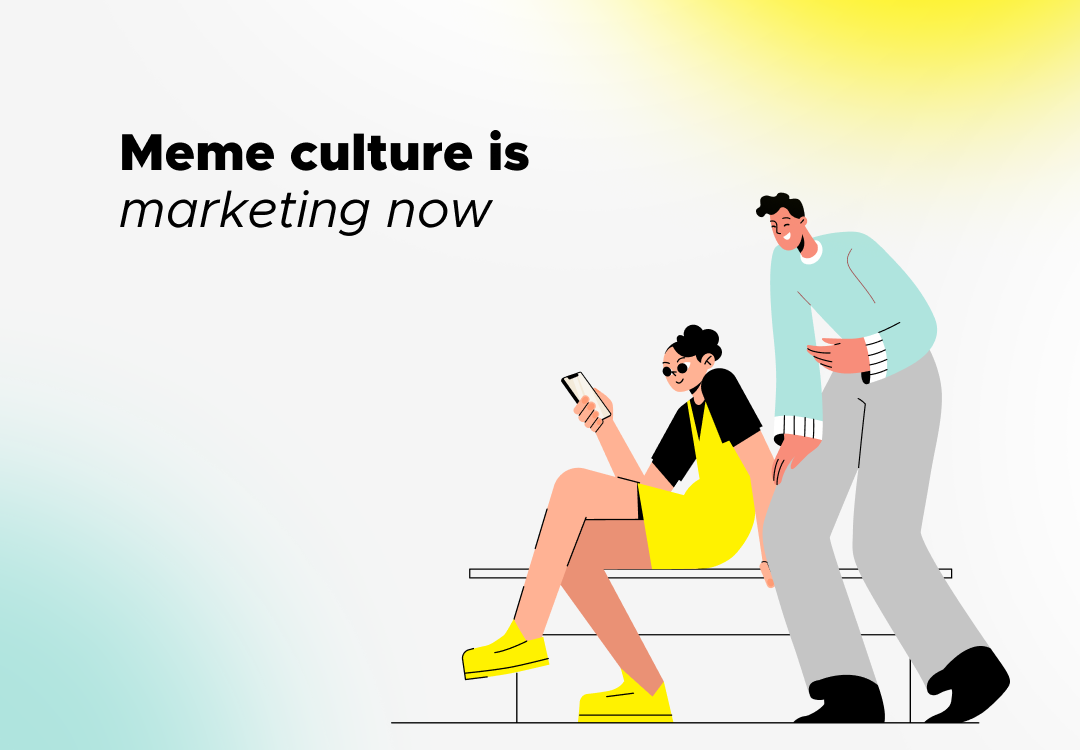Platform wars: Where should your brand invest in 2026?
While most brands chase familiar platforms, forward-thinking marketers are building advantages where algorithms don't control reach, commerce happens natively, and communities become competitive moats. Here's where smart brands are investing - and why your budget needs to shift before this window closes.
November 13, 2025

The social media agency playbook is splitting. Traditional players chase Instagram and TikTok metrics while forward-thinking brands quietly build strategic advantages on platforms most agencies ignore. With over 5 billion people now using social media and the average person juggling nearly seven platforms monthly (Smart Insights, 2025), the real question isn’t where your audience exists – it’s where they’re genuinely engaged.
3 platforms that deserve your attention beyond the social-giants
Social media users spend an average of 2 hours and 28 minutes daily on platforms (SQ magazine, 2025), but engagement quality varies dramatically. While everyone obsesses over Instagram Reels and TikTok virality, consumers – especially Gen Z – are increasingly seeking authenticity and genuine connections, craving to be part of something meaningful rather than passively consuming algorithm-fed content.
1. Threads: The real-time conversation gold rush
Threads surpassed 150 million daily active users in Q3 2025, with Meta’s AI recommendation systems driving 10% more time spent on the platform (Storyboard 18, 2025) More revealing: 59% of marketers plan to partner with more creators on Threads in 2025, with 92% reporting that influencer content achieves greater reach than brand accounts (Outfy, 2025).
What makes this matter: Threads grew from 100 million to 320 million monthly users between 2023 and 2025, yet the space remains uncrowded compared to established platforms. 53% of marketers now post to Threads, with an additional 23% planning to establish presence in 2025 (MarTech, 2025) – meaning early movers capture attention before saturation.
Smart brands are leveraging this window differently. Netflix, ClickUp, and Gymshark succeed on Threads by mixing humor, authenticity, and community-focused content rather than polished promotional messaging. The platform’s Instagram integration provides cross-platform amplification without requiring separate audience building from scratch.
2. Discord: Owned communities as competitive moats
Discord reached 200 million monthly active users by January 2025, with projections climbing to 259.2 million by year-end. More significantly, 44% of Gen Z gamers and 20% of Gen Zers overall use Discord regularly, with nearly 600 million registered users across increasingly niche communities spanning music, technology, finance, and wellness.
The strategic shift: Brands like Jack in the Box, Samsung, Netflix, and Mentos are partnering directly with Discord server owners, paying them to share promotional content across communities sometimes exceeding 100,000 members. This represents fundamentally different economics than traditional social advertising.
Discord isn’t a broadcast platform – it’s built around tight-knit servers where people spend hours building culture, making it about deeper engagement rather than impressions. For agencies and consulting firms, this means Discord communities become defensible assets that competitors cannot replicate through paid advertising alone. From niche interests to mass movements, the most successful brands are those that engage, co-create, and respond in real time.
3. Substack: Direct relationships without algorithmic interference
Substack serves over 35 million active subscribers with more than one million paying subscribers, representing 60% growth in paid subscriptions during 2024. The platform enables brands, thought leaders, and consulting firms to build direct audience relationships with subscription revenue and zero algorithm dependency – a critical advantage as consumer skepticism toward algorithm-controlled feeds intensifies.
What distinguishes Substack from traditional social platforms is its economic model. Brands don’t compete for algorithmic favor or pay for reach to their own audiences. Instead, they build owned subscriber lists that provide predictable, recurring engagement independent of platform policy changes. For B2B sectors, professional services, and thought leadership positioning, Substack provides infrastructure to demonstrate expertise while building audiences that compound over time rather than disappearing when algorithms shift.
The platform’s growth reflects broader consumer preference for substantive content over algorithm-fed snippets. As Gartner predicts 50% of consumers will limit major platform use by 2026 due to misinformation concerns, Substack represents insurance against the volatility inherent in rented algorithmic attention. For social media marketing strategies extending beyond 2026, owned email audiences through platforms like Substack provide foundational assets that survive platform disruption.
Social commerce: The revenue shift demanding budget reallocation
US social commerce sales will surpass $100 billion in 2026, growing from $85.58 billion in 2025 (Blogging Wizard, 2025), while the global social commerce market is expected to reach $6.23 trillion by 2030, growing at a 30.71% CAGR (Modor Intelligence, 2025). This isn’t incremental growth – it represents fundamental restructuring of where transactions occur.
The budget allocation question becomes urgent when examining platform-specific performance. TikTok Shop processed $26.2 billion in GMV during H1 2025, with full-year projections reaching $66.2 billion – 100% year-over-year growth. Among US users, 43.8% made purchases in 2024, with 49.7% now buying monthly. In the US, social commerce retail earnings are predicted to reach nearly $80 billion in 2025, with sales through social networks reaching over 17% of total online sales (Shopify, 2025).
For brands allocating 2026 marketing budgets, social media currently represents 11.3% of marketing budgets according to The CMO Survey drawing from over 11,000 marketing executives (Single Grain, 2025). However, given social commerce’s trajectory, forward-thinking brands should be allocating 15-20% of total marketing spend specifically to social commerce initiatives – distinct from traditional social media awareness spending. This includes investment in shoppable content creation, creator commerce partnerships, and platform-specific commerce infrastructure like TikTok Shop storefronts and Instagram Shopping optimization.
The distinction matters because commerce-first platforms optimize algorithms for conversion rather than just engagement. Xiaohongshu exemplifies this with 218 million monthly users and projected $20-25 billion GMV in 2025, where 78% of users make purchase decisions based on platform reviews. Amazon Live leverages existing e-commerce infrastructure for high-conversion livestream commerce, while TikTok Shop’s entertainment-driven commerce creates seamless purchase paths within content consumption. Smart social media agencies recognize that social commerce isn’t about presence across all shopping-enabled platforms – it’s about strategic selection where commerce architecture matches audience purchase behavior, requiring dedicated budget allocation separate from traditional social awareness spending.
Why smart money follows engagement, not legacy metrics
Social media advertising spend is projected to reach $276.7 billion in 2025 (Sprout Social, 2025), but allocation strategy separates winners from followers. The data reveals where sophisticated marketers invest:
TikTok leads engagement with users spending 58 minutes daily, followed by Instagram at 52 minutes and Facebook at 38 minutes (TekRevol, 2025). However, 46% of consumers now purchase products directly through social media, up from 30% in 2018 (Sendible, 2025) – indicating commerce integration matters more than raw time spent.
Platform excellence now demands specialists who understand behavioral and algorithmic nuances. Buffer data shows LinkedIn’s median engagement rate rose to 8.01% in January 2025, up from 6% the previous year – a 33% improvement driven by algorithm changes favoring specific content formats (Hootsuite, 2025). Generalist social media managers cannot maintain this depth across all platforms.
The strategic implication for your 2026 budget
Social media has become the primary brand discovery tool, with TikTok, YouTube, and Instagram replacing traditional search engines as consumers rely on platforms for recommendations, product research, and direct purchases. Yet discovery alone doesn’t guarantee conversion or loyalty.
The winning strategy combines three elements: commerce-first platforms for transaction efficiency (15-20% of marketing budget), owned communities for sustainable relationships, and real-time conversation spaces for authentic engagement. Brands capturing disproportionate value partner with social media agencies operating inside specific platforms daily rather than applying identical playbooks across channels.
For 2026, this means moving beyond surface-level presence toward genuine platform expertise – understanding that Threads offers first-mover advantages in brand-safe conversation, Discord provides community moats independent of algorithmic whims, Substack delivers owned audiences immune to platform volatility, and commerce-integrated platforms like TikTok Shop provide conversion infrastructure that awareness platforms retrofitted unsuccessfully.
The platform wars of 2026 won’t reward brands achieving presence everywhere. Victory belongs to those understanding structural platform differences and aligning investment with genuine strategic advantage – the new competitive requirement for social media marketing and the creator economy.
Latest News ☕

Top 5 Christmas campaigns: How the biggest brands are celebrating
November 11, 2025
The best Christmas campaigns of 2025 are already making waves across social media. Here's ...

Meme culture in social media marketing in 2026: how brand accounts are leaning into the success
November 8, 2025
Meme marketing has evolved from internet joke to serious business strategy, with the indus...

Top 10 global events every brand should strengthen partnerships around in 2026
November 6, 2025
In 2026, the world’s biggest cultural and sporting events will define where audiences ga...


